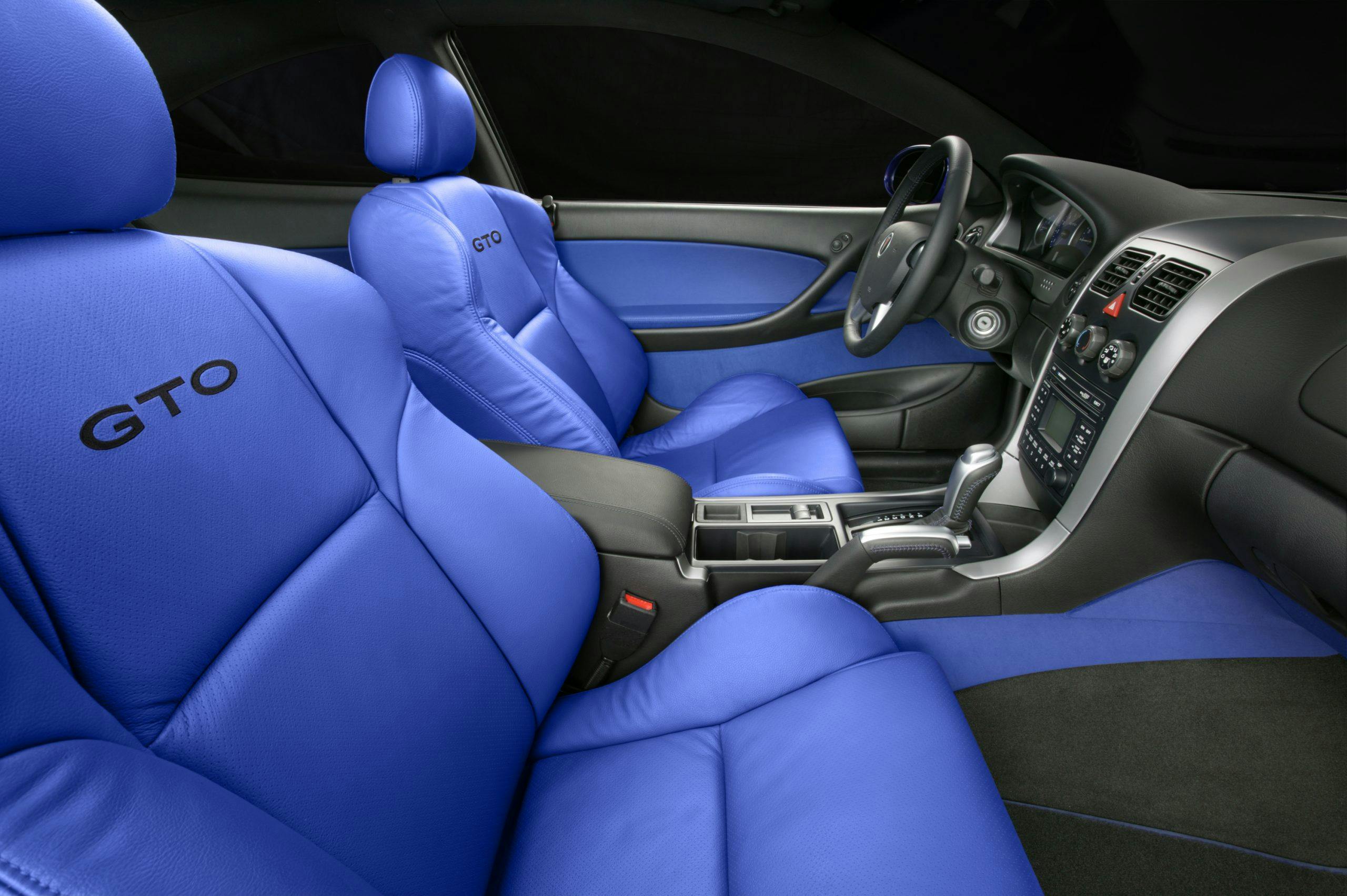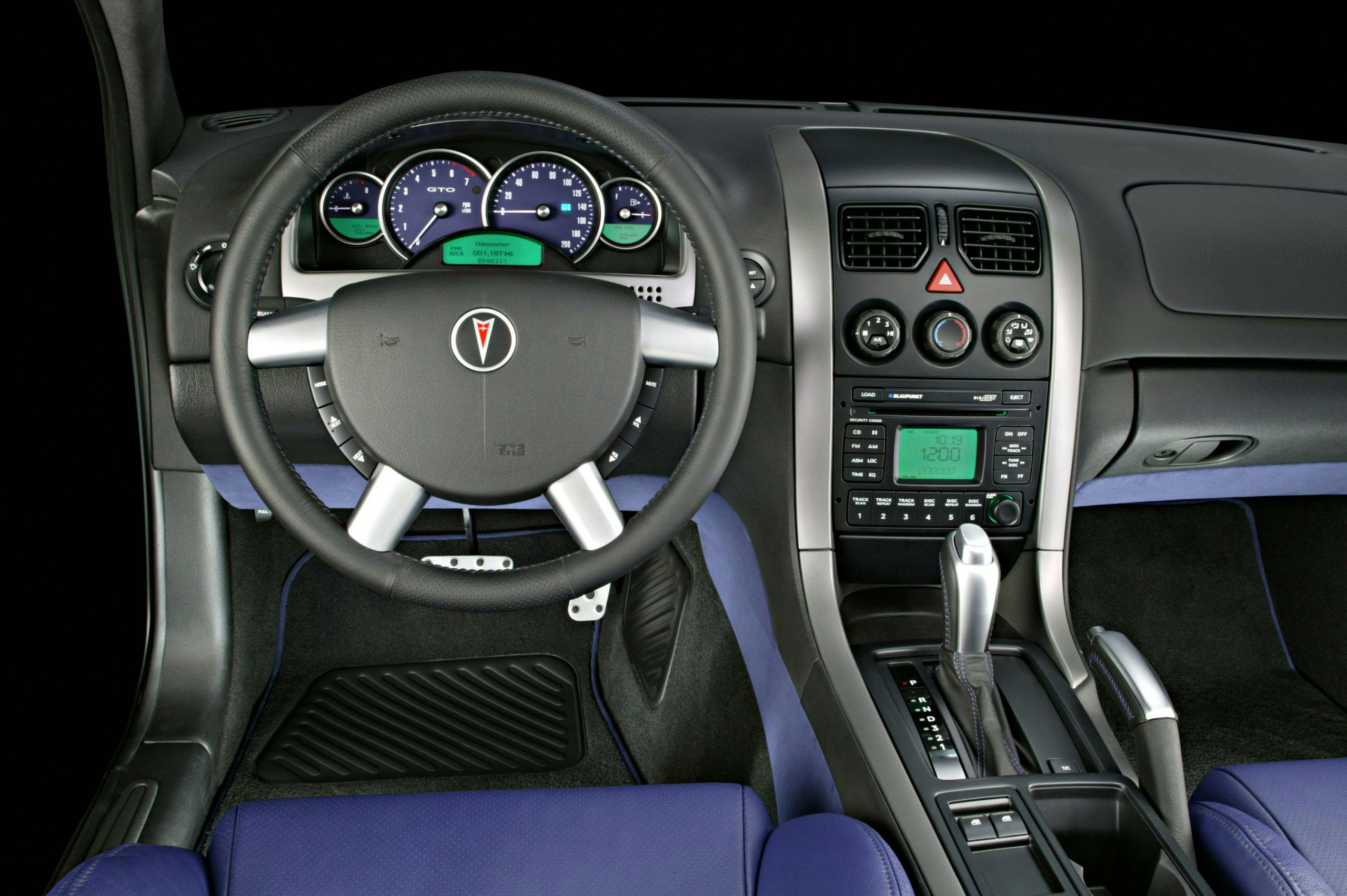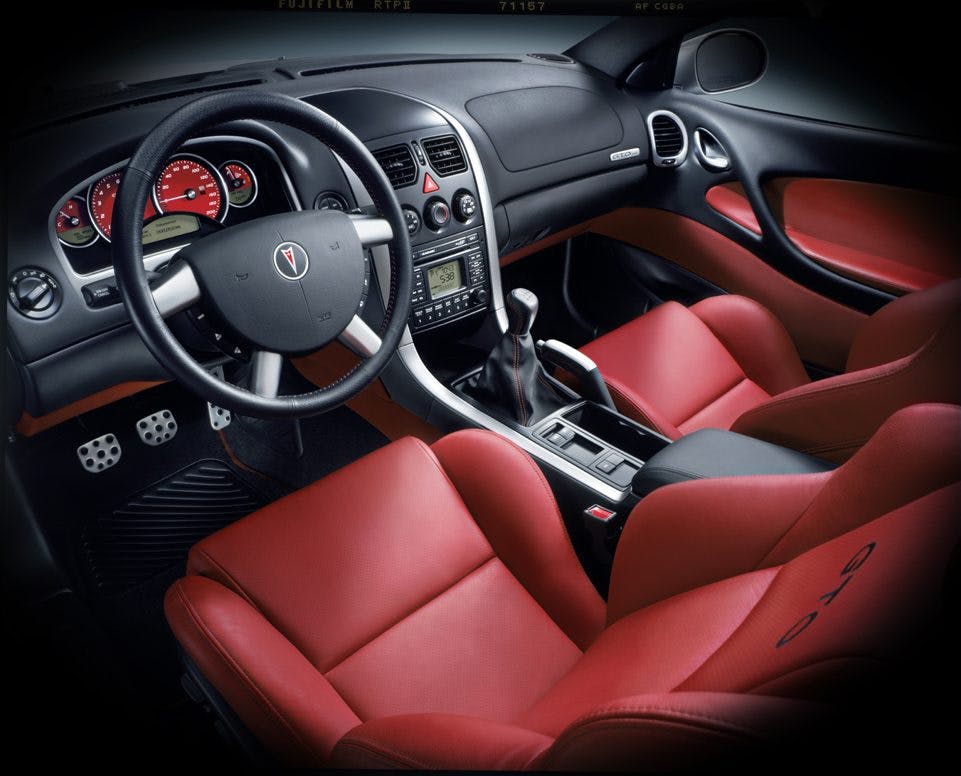How GM revived the GTO with muscle from Down Under
When GM president Rick Wagoner succeeded Jack Smith as CEO in June 2000, he knew he desperately needed an effective product leader—with a proven track record—to turn around the company’s aging portfolio. At this time, GM cars and trucks were reasonably competitive on quality but hobbled by ho-hum styling, cheap interiors, and dated powertrains. GM needed all three flaws fixed—ASAP.
Wagoner turned to Bob Lutz, who had resigned as Chrysler president after then-CEO Lee Iacocca snubbed him as his replacement to hire Bob Eaton (from GM Europe) instead. Lutz had started his auto career at GM Europe, then BMW, then in leadership positions at first Ford, then Chrysler. He had a stellar product-guy reputation, but he was languishing as the CEO of battery maker Exide. There was also the matter of Lutz’s age; at 69, he was four years past GM retirement age. Wagoner went to see him.
Wagoner’s first question: “Who do you know who’s just like you but 50 years old?” Lutz could think of no one. Wagoner asked if he would be interested in consulting. Lutz declined, since a consultant has no power to get things done. Then: “I don’t suppose you would consider rejoining us full-time.” Lutz said yes, provided he would have the necessary title and decision-making authority.
Lutz came on board as product vice chairman on Sept. 1, 2001 and over the next several years transformed GM’s product culture. He unleashed and empowered GM Design to spread its wings. He convinced reluctant finance leaders to invest sufficiently in better interiors, engines, and powertrains. He also had ideas on some exciting niche products—including a new GTO.
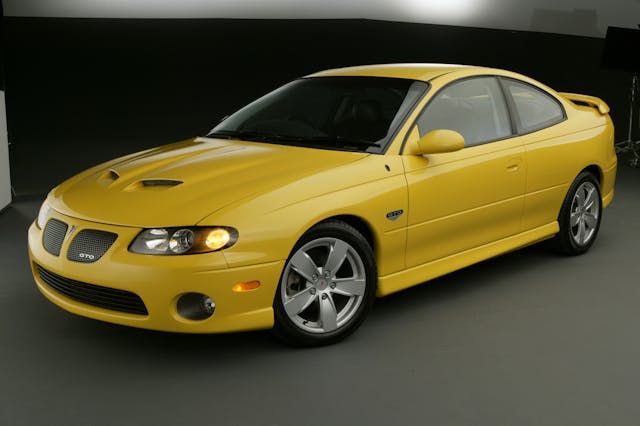
“When I was still at Chrysler, and later at Exide,” he later related, “I kept reading U.S. car magazines. And every now and then one would have an article on the Holden Commodore. They would say something like, ‘Commodore is the GM car that can take on a BMW M5 … the best car General Motors has ever made.’”
Holden, GM’s Australian brand, had a long history of rear-wheel-drive performance that was born and bred Down Under. When Lutz arrived in 2001, the company was making waves with the recently-introduced Monaro coupe, based on the VT Commodore. “Almost the minute I came to GM, I got in touch with Holden and said, ‘We could use a few of those Monaros over here as Pontiac GTOs.’ And I exchanged emails with some people in GM who were floating the same idea.

“I arranged to borrow a Commodore SS sedan, which had the same Corvette engine and gearbox as the Monaro, from GM’s U.S. engineering fleet, and we loved it. My wife got used to driving on the wrong side of the car, and I couldn’t pry her out of it.”
And when Lutz got a chance to drive a Monaro CV8 in early 2002, he was very impressed. “The more we looked at it,” he said, “the more we realized that, for the first time in 30 years, we actually had the basic structure to create a car worthy of the name GTO.”

When the Firebird died after 2002, Pontiac lost its last V-8, effectively stripping GM’s former hot-car division of that image. “It’s no secret we had a rebuilding job to do,” said the general marketing manager (soon to be general manager) at the time, Lynn Myers. “To reestablish our credentials as a performance division, we wanted cars that people would lust after. We wanted people buzzing about them on the Internet and young people hanging pictures of them on their walls.”
GM’s North American Strategy Board green-lit the program in March 2002, partly because of how quickly and inexpensively Lutz said it could be done using Holden’s excellent Monaro as a foundation. The order came for it to be market-ready in just 18 months—by late 2003—in advance of the January 2004 Detroit North American International Auto Show.
Design
Given the accelerated timeline, there was no time for new sheetmetal or major appearance alterations aside from a new composite front fascia for a proper Pontiac face. Most GM leaders felt that would be OK, since the Monaro already wore a tightly stretched, cleanly sculpted Euro-coupe skin that would blend well with Pontiac’s growing family of cleanly restyled products. (The smooth G6 and Solstice would arrive for 2005 and 2006, respectively.)
John Mack, who was design director for GM international joint venture programs, coordinated the visual transformation. “For reasons of both tooling and timing,” he said, “[GM] wanted to keep as much of the existing car as possible.”
Michael Simcoe, who headed Holden Design in those days (and is now GM’s Global Design VP), oversaw the project at Holden under chief designer Richard Ferlazzo.

The GTO’s new front fascia incorporated Pontiac-signature twin-port grilles, projector-beam headlamps, large fog lamps flanking a wide underslung air intake, a Pontiac badge on the nose, and GTO lettering on the left-side honeycomb grille. Wide W-rated tires on 17-inch five-spoke wheels and integrated “ground effects” along the sides helped give it a low, aggressive stance. A GTO front-fender badge and a rear spoiler set off the profile, while somewhat wimpy-looking twin left-side exhaust outlets and wraparound tail lamps with embedded backups completed the rear look.
Why twin exhausts on just one side? “The Monaro has asymmetrical body structure in the rear, and there was not enough time to move the right-side exhaust system to the other side,” chief engineer Bob Reuter explained, “even though it is a true dual exhaust system.”

The Monaro’s luxo-sport interior was carried over largely intact, and it could be color-keyed in red, blue, or purple to match three of the seven available exterior colors for 2004. “We also did custom-embroidered seats with GTO lettering, machine-drilled metallic pedals and a number of other things to take it where [it] needed to be,” Mack added.
One unfortunate feature for North America was the unhandy (right-hand-drive) Aussie radio—with its volume knob on the right.
Engineering
The Monaro’s dynamics were fantastic, vehicle line executive (VLE) Jerry Gillespie asserted, “so we didn’t change any of that character because it was already so good. But we needed more of a muscle coupe, which has a very different character. We wanted it to have more power, to be faster and to have an exhaust system that when you started the engine, you didn’t have to look at the tachometer to see if it was running.”
The engineering team’s top priority was improving performance and to “do whatever it takes to get that right … to make it a legitimate GTO,” Reuter said. “We made it breathe better [with a] much freer-running intake … and we put in a higher-lift cam to provide more torque. The ‘64 did zero to 60 in about 7.3 seconds; we’re two seconds better and it goes around corners better. Every way you look at this car, it’s clearly superior to the ’64.” They even benchmarked the ’64 GTO’s muscular exhaust rumble and came close to matching it.

As launched for 2004, the U.S. GTO’s Corvette-based 5.7-liter LS1 V-8 delivered 340 hp and 360 lb-ft of torque (though some later reports stated 350 hp and 365 lb-ft) through a choice of six-speed manual or four-speed Hydra-Matic transmission. And, because the Monaro’s ride/handling balance was already so good, all the chassis needed for the North American market was a set of performance-capable all-season tires instead of the summer skins it wore at home.
Similarities aside, the conversion to left-hand drive proved complex and there was considerable time and added cost necessary to make the GTO U.S.-legal. “We had to revise the interior trim, the knee bolsters and some of the garnish trim to pass federal safety requirements,” Reuter said, “We moved the fuel tank from under the rear compartment into the trunk [which reduced cargo space], made structural modifications to the longitudinal members and added a brace to load up the rear impact bar to the differential. All told, we changed about 450 parts on the car, which is roughly 20 percent of the overall content, including much that you can’t see, like seals and corrosion protection.”
Market thud
GTO assembly kicked off at Holden’s Elizabeth, South Australia plant in Sept. 2003 with a target of 18,000 units for the ’04 model year, and the U.S. launch followed soon after. Media reviews praised the car’s performance and handling but slammed its styling as too conservative for a proper GTO. Without muscular flanks, hood scoops, and bigger, more macho-looking dual exhausts, it looked more like a coupe version of the mid-size G6 sedan that followed for 2005. It didn’t help that its base price was about $34,000 ($11,000 over target), partly due to the Australian dollar’s strong growth vs. the U.S. dollar, and some foolish dealers asked for even more.
Standard equipment included a limited-slip differential with traction control, four-wheel disc brakes with standard ABS, 2 + 2 bucket seating with black leather seats and optional color coordination with exterior paint, and a premium sound system with integrated six-disc CD changer.
The hood scoops planned for 2005 arrived early as part of an ‘04 Sport Appearance Package that also brought a taller rear spoiler and more deeply inset front grilles. A late-year W40 package featured a special Pulse Red color with “GTO” embroidery on black seats and a grey gauge cluster. It was a rough start; just 13,569 GTOs were sold of the 15,728 imported for 2004.
The hood scoops became standard for ’05 along with split dual exhausts in a new rear fascia, optional 18-in. wheels, bigger brakes, a strengthened drivetrain and interior upgrades. Most importantly, a 400-hp, 400 lb-ft 6.0-liter LS2 V-8 replaced the LS1, dropping zero-60 times to well under five seconds. Still, ’05 GTO production slumped to just 11,069 cars. Hagerty features editor Conner Golden once owned a 2005 GTO, calling it “an alternate-reality, muscle-bound BMW M3. Or maybe a Corvette in an Australian fat suit.”
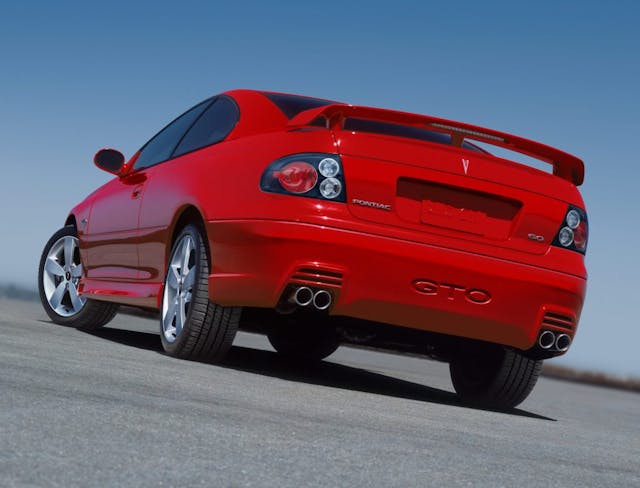
More changes followed for ‘06, but by then everyone knew that this reborn GTO was a lost cause. Just 13,948 examples were built in that final, bringing the three-year total to 40,808 before the last one rolled off the line on June 14, 2006. As had happened too many times before, GM leaders put timing ahead of market readiness and were unable to overcome a lame launch with later improvements. As many have said, you don’t get a second chance to make a first impression.
The GTO did, however, whet Pontiac’s appetite for Australian muscle. For 2008, GM unleashed the VE Commodore-based Pontiac G8 with more dramatic styling and more engine options to fit a variety of budgets. The 415-hp GXP’s combination of a free-breathing LS3 and six-speed manual remains one of the most memorable sport sedans of the millennium. But even the G8 couldn’t escape low sales and the global recession that would end Pontiac altogether.

